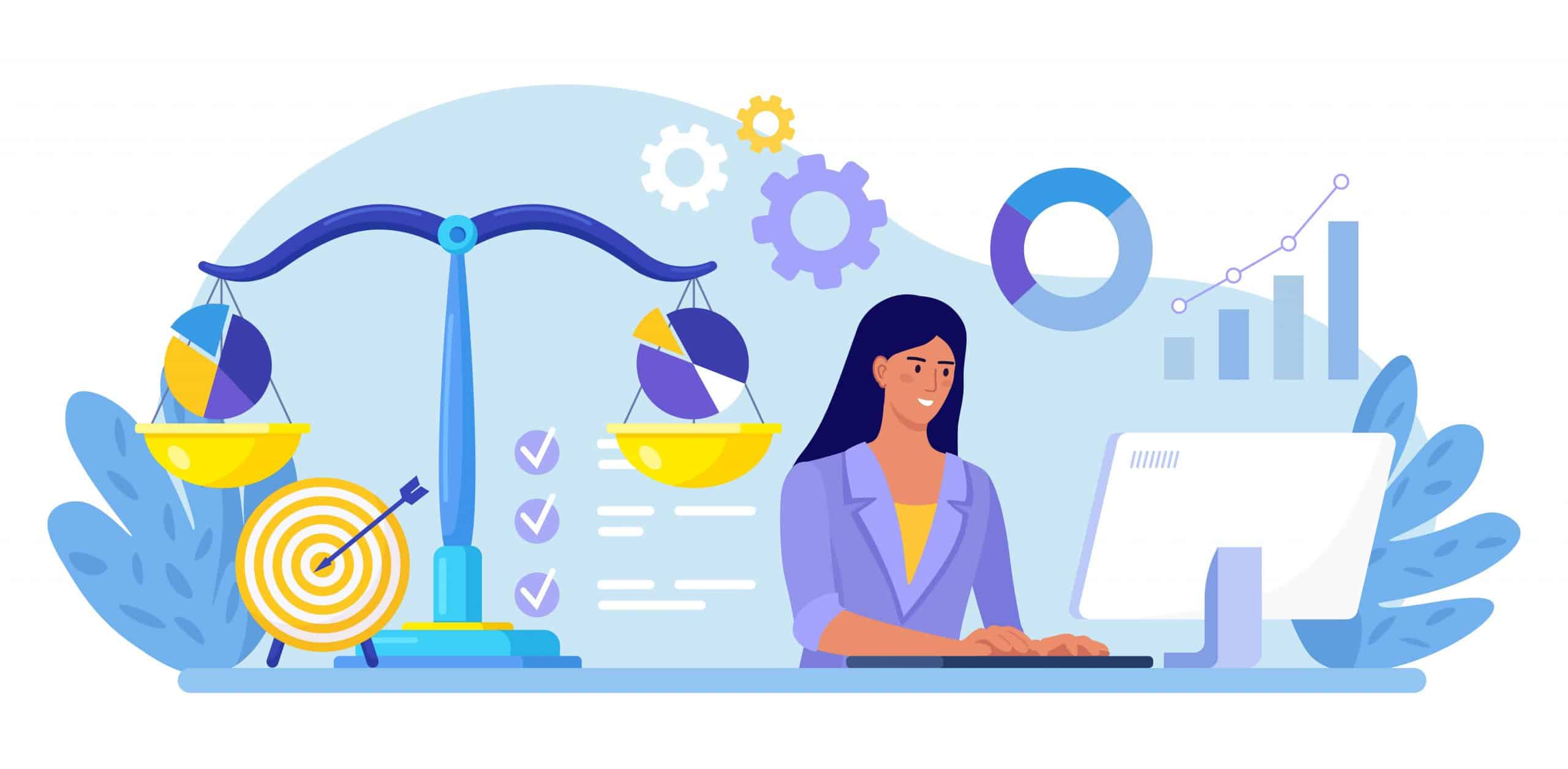Security Compliance Made Simple: SOC 2, HIPAA, and GDPR
In today’s digital age, where data breaches and cyber threats are becoming increasingly common, ensuring the security of sensitive information is paramount for any organization. Security compliance refers to adhering to predefined standards, regulatory requirements, and industry regulations designed to protect sensitive data from such threats. This article aims to provide a simplified overview of three essential security compliance regulations: SOC 2, HIPAA, and GDPR. It will delve into the importance of security compliance, explain the specific requirements of each regulation, discuss the penalties for non-compliance, and provide resources and tools that can help organizations achieve compliance.
What is Security Compliance and Why is it Important?

Security compliance encompasses all the measures an organization takes to protect its assets and meet internal security and regulatory requirements. This involves creating and implementing procedures and controls to ensure the organization meets the necessary security requirements and follows best practices in safeguarding its systems, data, and operations. Security compliance is not just about avoiding penalties; it’s about building a security framework that can withstand emerging cyber threats. By adhering to security norms and standards, businesses can establish secure data processing environments, minimizing the risks associated with data breaches, including reputational damage, legal sanctions, financial losses, and operational consequences.
Compliance provides a baseline for security, but organizations need to adopt a security-minded approach to address any remaining gaps and minimize risks effectively. This includes implementing security controls such as firewalls, encryption, and regular system updates to maintain the confidentiality, integrity, and availability of sensitive information.
Security compliance is important for several reasons:
- Risk Reduction: Compliance helps reduce the impact of potential risks, safeguarding sensitive information from threats.
- Business Continuity: It ensures a business’s ability to continue operations even in the face of disruptions, thanks to well-thought-out contingency plans.
- Enhanced Reputation: Compliant organizations build a positive image and increase their commercial value, leading to trust and confidence among customers, suppliers, shareholders, and partners.
- Legal Compliance: Compliance helps organizations adhere to relevant legislation and regulations, reducing the risk of legal issues and fines.
A crucial aspect of security compliance is security awareness training for employees. By educating employees about security policies, procedures, and best practices, organizations can reduce the risk of human error and negligence, which are often contributing factors to data breaches.
Regulatory Requirements
Regulatory Requirements – SOC 2
SOC 2 (System and Organization Controls 2) is a voluntary compliance standard developed by the American Institute of CPAs (AICPA). It defines criteria for managing customer data based on five “trust service principles”: security, availability, processing integrity, confidentiality, and privacy. SOC 2 reports are unique to each organization, and each designs its own controls to comply with one or more of the trust principles.
To become SOC 2 compliant, organizations must:
- Identify controls mapping to criteria.
- Provide evidence of control effectiveness over time.
- Undergo a SOC 2 audit by a CPA firm.
- Remediate gaps.
- Obtain SOC 2 Type 1 and/or Type 2 report.
- Renew annually.
SOC 2 requirements include:
- Security: This principle focuses on protecting the system from unauthorized access. It involves implementing access controls to prevent malicious attacks, unauthorized deletion of data, misuse, unauthorized alteration, or disclosure of company information.
- Availability: This principle ensures the system is available for operation and use as agreed.
- Processing Integrity: This principle ensures that system processing is complete, valid, accurate, timely, and authorized.
- Confidentiality: This principle focuses on protecting information designated as confidential.
- Privacy: This principle applies to any information considered sensitive because of its personal nature. To meet the SOC 2 requirements for privacy, an organization must communicate its policies to anybody whose data they store.
SOC 2 compliance can be a competitive advantage, build trust with customers, and unlock sales opportunities. It demonstrates an organization’s commitment to data security and can be a key factor in attracting new customers and retaining existing ones.
Regulatory Requirements – HIPAA
HIPAA (Health Insurance Portability and Accountability Act of 1996) is a US federal law that sets national standards for protecting sensitive patient health information from being disclosed without the patient’s consent or knowledge. The HIPAA Security Rule requires physicians to protect patients’ electronically stored, protected health information (ePHI) by using appropriate administrative, physical, and technical safeguards to ensure the confidentiality, integrity, and security of this information.
HIPAA regulatory requirements include:
- Administrative Safeguards: These include designating a privacy officer, developing and implementing written policies and procedures, providing training to workforce members, and implementing a system for reviewing and verifying requests for PHI.
- Physical Safeguards: These include controlling physical access to facilities and workstations where PHI is stored.
- Technical Safeguards: These include access controls to systems, encryption of PHI, and password policies.
- Security Incident Procedures: Organizations must implement policies and procedures to address security incidents, identify and respond to suspected or known security incidents, mitigate harmful effects, and document security incidents.
- Contingency Plan: A contingency plan should be in place to ensure the continuation of critical business processes in the event of an emergency.
- Self-Audits: HIPAA requires covered entities and business associates to conduct annual audits of their organization to assess Administrative, Technical, and Physical gaps in compliance with HIPAA Privacy and Security standards.
HIPAA compliance requires a culture of accountability and continuous improvement within an organization. This includes regularly reviewing and updating policies and procedures, providing ongoing training to employees, and conducting periodic risk assessments to identify and address potential vulnerabilities.
Regulatory Requirements – GDPR
GDPR (General Data Protection Regulation) is a regulation in EU law on data protection and privacy in the European Union (EU) and the European Economic Area (EEA). It also addresses the transfer of personal data outside the EU and EEA areas. The GDPR aims primarily to give control to individuals over their personal data and to simplify the regulatory environment for international business by unifying the regulation within the EU.
GDPR regulatory requirements include:
- Lawfulness, fairness, and transparency: Personal data must be processed lawfully, fairly, and transparently.
- Purpose limitation: Personal data must be used for legitimate purposes that are explicitly spelled out to a data subject when their information is collected.
- Data minimization: Personal data collection should be limited to what is necessary.
- Accuracy: Personal data must be updated and accurately kept.
- Storage limitation: Personal data can be stored only for as long as necessary.
- Integrity and confidentiality: Personal data must be processed in a manner that ensures appropriate security of the personal data, including protection against unauthorized or unlawful processing and against accidental loss, destruction, or damage, using appropriate technical or organizational measures.
- Accountability: The data controller is responsible for, and must be able to demonstrate compliance with, the data protection principles.
- Data Protection Impact Assessment (DPIA): The GDPR requires organizations to conduct a DPIA before processing data that poses a high risk to individual rights and freedoms. This applies to activities such as automated decision-making, processing sensitive personal data on a large scale, and systematically monitoring a publicly accessible area on a large scale.
GDPR emphasizes giving individuals control over their personal data and promoting transparency in data processing activities. It is an individual-centric approach to data protection that empowers individuals with rights and control over their information.
Lawful Bases for Processing:
The GDPR outlines six lawful bases for processing personal data:
- Consent: The individual has given clear consent for you to process their personal data for a specific purpose.
- Contract: The processing is necessary for a contract you have with the individual, or because they have asked you to take specific steps before entering into a contract.
- Legal obligation: The processing is necessary for you to comply with the law (not including contractual obligations).
- Vital interests: The processing is necessary to protect someone’s life.
- Public task: The processing is necessary for your legitimate interests or the legitimate interests of a third party, unless there is a good reason to protect the individual’s personal data which overrides those legitimate interests. (This cannot apply if you are a public authority processing data to perform your official tasks.)
Data Subject Rights:
Under the GDPR, individuals have the following rights:
- The right to access: Individuals can request access to their personal data and information about how it is being processed.
- The right to rectification: Individuals can request the correction of inaccurate or incomplete personal data.
- The right to erasure: Individuals can request the deletion of their personal data in certain circumstances, such as when the data is no longer needed for the original purpose or when consent is withdrawn.
- The right to restriction of processing: Individuals can request limitations on how their personal data is processed in certain circumstances.
- The right to data portability: Individuals can request a copy of their personal data in a commonly used format for transfer to another controller.
- The right to object to processing: Individuals can object to the processing of their personal data in certain circumstances, such as for direct marketing purposes.
Penalties for Non-Compliance
Penalties – SOC 2
While SOC 2 is a voluntary standard, non-compliance can have significant consequences for organizations. These can include:
- Loss of customer trust: Customers may be hesitant to do business with an organization that cannot demonstrate its commitment to data security.
- Damage to reputation: A security breach can severely damage an organization’s reputation and make it difficult to attract new customers.
- Loss of business opportunities: Organizations may be excluded from bidding on contracts or partnering with other businesses if they are not SOC 2 compliant.
Penalties – HIPAA
HIPAA violations can result in significant financial penalties, with a tiered system based on the nature of the violation:
| Scenario | Description | Fine per Violation | Maximum Fine |
|---|---|---|---|
| Did Not Know | For a “Did Not Know” violation | $1,000 – $50,000 | $1,500,000 |
| Willful Neglect – Corrected | The violation was due to willful neglect and the covered entity or business associate corrected the violation within the required time period. | $10,000 – $50,000 | $1,500,000 |
| Willful Neglect – Not Corrected | The violation was due to willful neglect and the covered entity or business associate did not correct the violation within the required time period. | $50,000 | $1,500,000 |
More severe violations can even result in criminal charges.
Penalties – GDPR
Organizations that fail to comply with GDPR can face heavy fines, up to €20 million or 4% of annual global turnover, whichever is higher.
Resources and Tools for Achieving Compliance
Learn more about GetTrusted Security as a Service.
Case Studies
Cases – SOC 2
- Trinsic: Trinsic, a technology company, leveraged an AI audit model to achieve SOC 2 compliance efficiently. The AI-powered audit process removed the conventional labor-intensive and manual SOC 2 audit process, resulting in a faster and more thorough audit.
- ManagingLife: ManagingLife, a health tech company, achieved SOC 2 compliance. It helped them centralize controls, policies, and generate critical tasks, enabling them to fast-track their compliance timeline.
- Voxel: Voxel, a SaaS company, achieved SOC 2 compliance in one month. This compliance helped them accelerate their sales cycle and establish trust with large enterprise customers.
- Shutlingsloe Ltd: This company provides e-assessment applications hosted within a Microsoft Azure cloud environment. They underwent a SOC 2 Type 1 audit to meet the requirements of a US client. The audit examined controls related to security, availability, processing integrity, confidentiality, and privacy.
Cases – HIPAA
- Case Study 1: A rural family practice clinic faced a complaint for failing to verify the identity of a patient’s father before granting access to his minor daughter’s medical record. This highlights the importance of proper identity verification procedures to ensure HIPAA compliance.
- Case Study 2: The University of Rochester Medical Center was fined $3 million for losing a flash drive containing unencrypted PHI and failing to implement adequate security measures despite previous incidents. This emphasizes the need for robust security measures and risk analysis to prevent HIPAA violations.
- Case Study 3: Children’s Hospital Colorado Health System experienced phishing attacks that resulted in unauthorized access to ePHI. They were also found to have failed to provide HIPAA training to a significant portion of their workforce and had not conducted a HIPAA-compliant risk analysis. This case highlights the importance of security awareness training, risk assessments, and incident response planning for HIPAA compliance.
Cases – GDPR
- Case Study 1: A public agency was found to have violated GDPR by publishing an employee’s photo in a workplace newsletter without consent. This highlights the importance of obtaining consent before processing personal data, even in seemingly innocuous situations.
- Case Study 2: Guerin Media Limited was prosecuted for sending unsolicited marketing emails to individuals’ work email addresses without consent or an unsubscribe function. This emphasizes the importance of obtaining valid consent for marketing communications and providing individuals with the ability to opt out.
- Case Study 3: An Irish public agency was found to have unlawfully disclosed an employee’s medical information during a workplace dispute. This case emphasizes the importance of data protection in the context of workplace disputes and the need for organizations to be prepared to handle such situations in a GDPR-compliant manner.
Differences Between SOC 2, HIPAA, and GDPR
While SOC 2, HIPAA, and GDPR all aim to protect sensitive data, they have key differences:
| Regulation | Scope | Applicability | Focus | Penalties for Non-Compliance |
|---|---|---|---|---|
| SOC 2 | Service organizations | Voluntary, often driven by customer demand | Data security, availability, processing integrity, confidentiality, and privacy | Loss of customer trust, damage to reputation, loss of business opportunities |
| HIPAA | Healthcare providers, health plans, and healthcare clearinghouses | Mandatory for covered entities in the US | Protecting patient health information | Financial penalties (up to $1.5 million per year), criminal charges |
| GDPR | Organizations that process personal data of individuals in the EU | Mandatory for organizations processing data of EU residents | Data protection and privacy rights of individuals | Fines (up to €20 million or 4% of annual global turnover, whichever is higher) |
Conclusion
Security compliance is crucial for organizations of all sizes and industries. SOC 2, HIPAA, and GDPR are essential regulations that provide a framework for protecting sensitive data. By understanding the requirements of these regulations and implementing appropriate security measures, organizations can minimize the risk of data breaches, maintain customer trust, and ensure business continuity. Organizations should proactively invest in compliance efforts, leverage available resources and tools, and stay informed about evolving security threats and compliance requirements to safeguard their data and maintain a strong security posture.
Furthermore, it’s important to recognize that security compliance is not a one-time activity but an ongoing process. Organizations must continuously evaluate and improve their security posture to meet changing compliance requirements and address emerging threats. This includes regularly reviewing and updating policies and procedures, providing ongoing training to employees, and conducting periodic risk assessments.
In today’s globalized business environment, these regulations are often interconnected. Organizations may need to comply with multiple regulations simultaneously, depending on their industry, location, and the type of data they process. This highlights the growing need for a holistic approach to security compliance, where organizations integrate security and privacy considerations into their overall business strategy and operations. By adopting a proactive and comprehensive approach to security compliance, organizations can not only protect sensitive data but also enhance their reputation, build trust with customers, and gain a competitive advantage.












